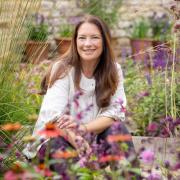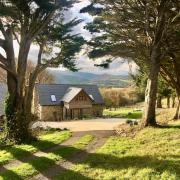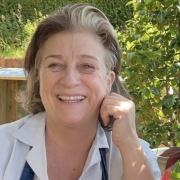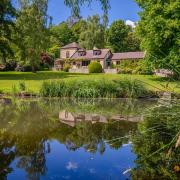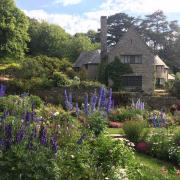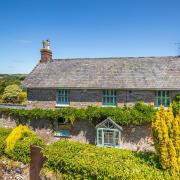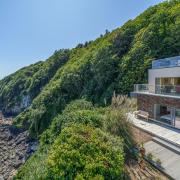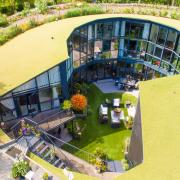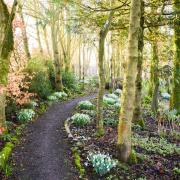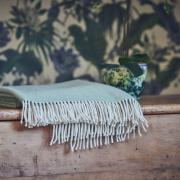Medical herbalist Helen Kearney works from her home near Uffculme, a former baptist chapel, complete with graveyard. Amid the birdsong and flowers of her peaceful garden, she tells us about the healing power of plants.
What connects organic medicinal herbs, a listed Baptist chapel and a luxury compost loo? You’d be forgiven for not knowing. The answer is Elder Farm and Helen Kearney, who attained a BSc (Hons) in herbal medicine ten years ago, and now practises in Devon and Somerset.
When I meet her, she is just four weeks into setting up Elder Farm’s new premises at the old Prescott Baptist Chapel, near Uffculme. It is an idyllic spot, awash with surround-sound birdsong despite its being midwinter. Helen, her husband Stuart, and their extended family live here, in two adjacent cottages.

Centred on the chapel building, the surrounding acre of organic land is lovely. Wonky gravestones add to the atmosphere, some of them with fresh flowers. ‘All the gravestones have to stay,’ Helen tells me, ‘and that’s fine. It’s really peaceful here. Our obligation is to keep it open for public access. It’s a lovely connection to local people, an important place.’
Adjacent to the environs of the chapel is an extensive area of garden with many native trees and an already established herb bed. This will be extended by Helen’s collection of organically grown medicinal herbs, relocated from her previous premises on the Devon-Somerset border. Their polytunnel, fondly known as the Eden Project, will be installed to extend the growing season and the range of herbs, allowing for more unusual, tender plants.
‘Growing organically can be challenging,’ she says, ‘but we’ve found that trying to copy natural systems is a good way to grow healthy, happy plants – lots of diversity, not just straight rows of one plant in bare soil. Our Devon climate can be very damp and not particularly cold some winters, so ensuring there are lots of plants that pest predators like, to encourage beneficial insects, and having a pond to encourage frogs, which eat slugs, is good.’


Helen makes her own tinctures and ointments and explains that growing herbs for their production of remedies doesn’t take up a huge amount of space. ‘The most herbs I need to make a litre of tincture is one kilo, often less, and we’ll definitely be able to be self-sufficient in herbs at this new premises.’
Solar panels add to the self-reliance, as well as an old well house which they have found on site and hope to restore, to have a private water supply.
I ask Helen what inspired her to follow the herbal route. ‘I’ve always had an interest in plants and started using herbal remedies when our children were small: calendula nappy rash cream and chamomile for teething. Then I found you could take a degree and qualify as a herbalist.’

We talk about the relative merits of ‘conventional’ medicine and herbal medicine, which was the conventional and trusted way of healing long before the birth of modern science.
‘I don't think a lot of conventionally trained medics know what herbal medicine is!’ she laughs. ‘However, there are a growing number of NHS doctors who are seeing the benefits of herbal medicine and there has been a successful trial of elderberry extract treating Covid-19 symptoms. When I was training, a hospital in North London employed (and still does) a herbalist in the dermatology department.’
She describes a holistic, time-rich approach to patients, who can see Helen at consulting rooms in either Tiverton or Wellington.

‘A medical herbalist spends a full hour with the patient at the initial consultation, taking a full, comprehensive case history. We’re also qualified to do physical examinations such as blood pressure or listening to someone’s chest. We then tailor-make a medicine specifically for that patient, blending herbs, with an understanding of their chemical constituents and actions.’

Helen would love more people to realise the benefits of herbs and encourages us all to ‘learn to recognise what may be growing in your garden or near where you live that has medicinal or nutritional benefits. Learn what you can do with it – nettles, for instance, are full of iron and are a natural antihistamine. Get a good book or look at a good website – and get out there!’
As a lover of nettle soup, I can certainly endorse that – give it a go!
elderfarm.co.uk






